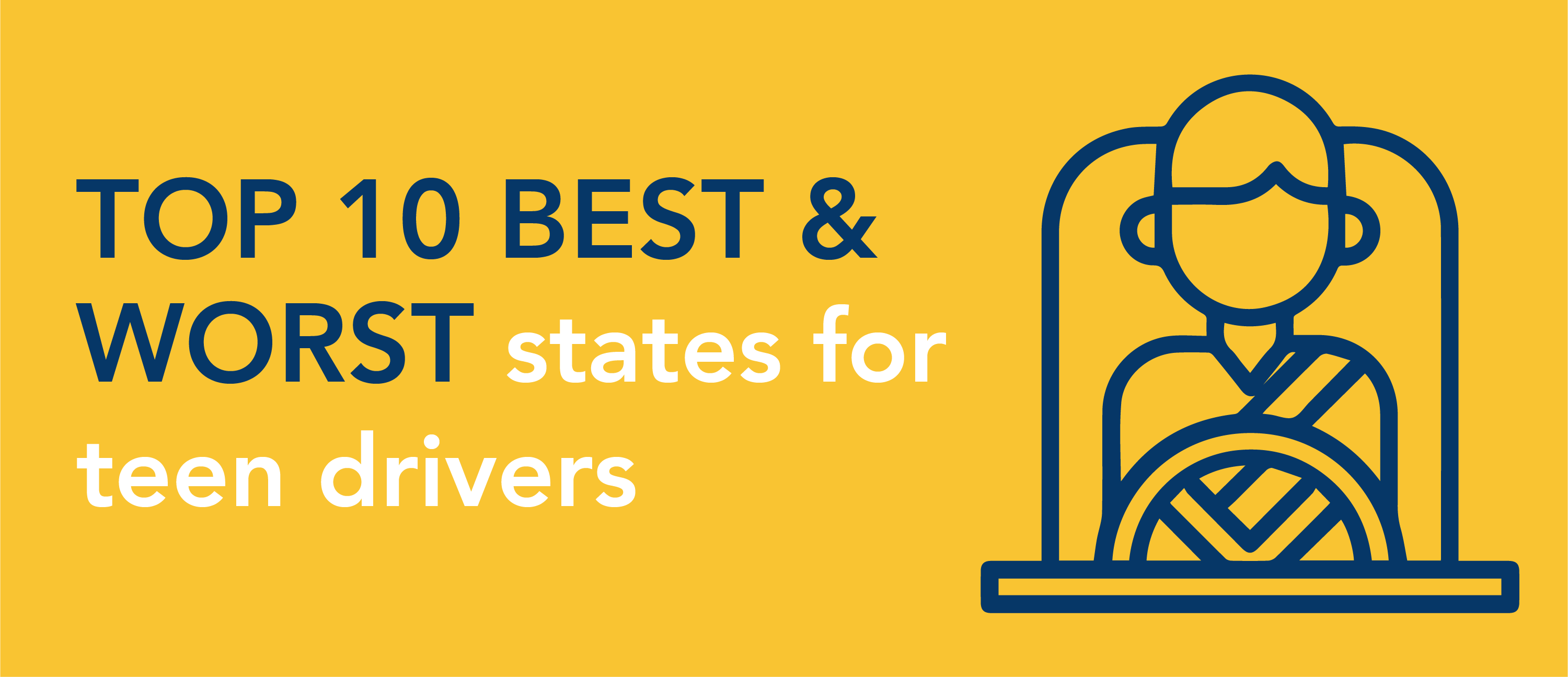Top 10 Best & Worst States For Teen Drivers
While driver education instills universal principles, new drivers can have vastly different learning experiences from one another because driving environments vary drastically throughout the US. City or country roads, lenient or stringent insurance and safety laws, hilly or flat terrain — all of these variables play a big part in shaping how effectively a new driver learns how to conduct themselves behind the wheel.
But the fact remains: traffic crashes remain the 2nd-leading cause of death in teens aged 16-19. Here we’ll go over the top 10 best and worst states in terms of safety for teen drivers according to the most recent data from carinsurance.com. Some of the key data that was analyzed to create this list include the number of teen driver fatalities, average cost of repairs, insurance costs, and whether there are Graduated Drivers Licensing (GDL) programs and distracted/impaired driving laws are in place.
Top 10 Best States For Teen Drivers
- New Jersey
- Minnesota
- Maryland
- Connecticut
- Alaska
- New York
- Texas
- Massachusetts
- Michigan
- Oregon
Notably, New Jersey consistently ranks in the top 10 for teen driver safety each year. This is likely because they have the fewest teen driver fatalities each year, have strong GDL laws, and low drinking and driving rates for young people.
Top 10 Worst States For Teen Drivers
- Montana
- Arkansas
- South Dakota
- Nebraska
- Mississippi
- South Carolina
- Missouri
- Idaho
- New Hampshire
- Wyoming
Montana unfortunately consistently ranks poorly in terms of teen driver safety, but in 2021, it takes the cake (yet again) for least safe state. It has incredibly high teen driver insurance costs, virtually no GDLs, and survey responses indicate high rates of drinking and driving among high school-aged teens. Additionally, it has high rates of careless/distracted driving and failure to obey situations. Taking in all of these factors, it may come as no surprise that Montana ranks 2nd-worst in the country in terms of teen driver fatalities.
This problem has become so significant in recent years, that Montana Highway Patrol has aimed to crack down on failure to obey situations, noting that 2017 “data shows 41 deadly collisions involving a driver without a valid license, 59 fatal crashes caused by a driver ignoring traffic signals and 114 people killed as a result of not wearing a seat belt.”
How to Improve Teen Driver Safety
One of the key consistencies among states that rank well in teen safety is having stringent GDL programs in place. The National Safety Council estimates that “graduated driver licensing systems are proven to reduce crashes involving teen drivers by as much as 40 percent, minimizing common risks such as passenger distraction, nighttime driving and cell phone use.”
WalletHub did a study in 2017 that gave attention to some states with consistently stellar GDL policies, including Michigan, New Jersey, New York, and Rhode Island. It may come as no surprise that these states also are consistently in the top 10 best states for teen drivers (although this year Michigan fell to #11).
Beyond state laws and programs, there are several things parents can do to instill good behind-the-wheel values in their kids. Setting a good example as a safe driver, practicing driving in various weather conditions, having candid discussions about impaired and distracted driving, and ensuring they are aware of local traffic laws are great steps toward your child understanding the gravitas that comes with operating a vehicle.
Read: 6 Teen Driver Safety Tips to Keep Out of Harm’s Way
Stay Safe on the Road With Top Driver
Top Driver’s top priority is to equip you and your teen with the knowledge needed to stay safe on the road. With more than 40 locations throughout Illinois, Michigan, and Ohio, Top Driver is your best resource for driver education, teaching over 15,000 students each year. We have a variety of teen programs for new drivers, adult refresher courses, and remedial courses.
Top Driver is also going the extra mile to ensure a safe learning space for our students and instructors by providing remote classroom education opportunities and implementing a coronavirus vehicle sanitization process.
Call 1 (800) 374-8373 or enroll online today!
Additional Reading:
